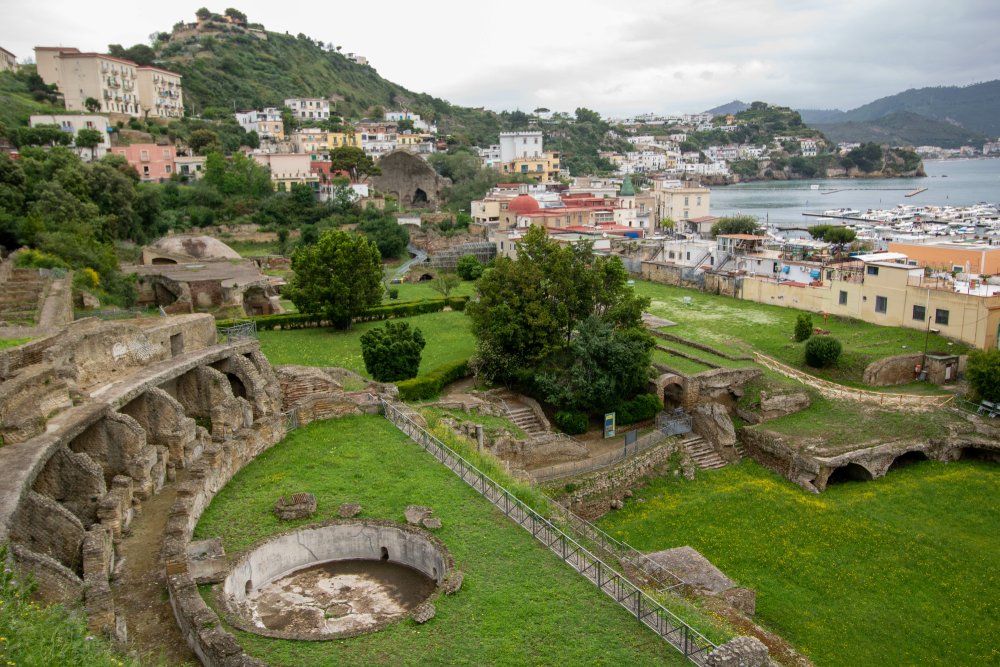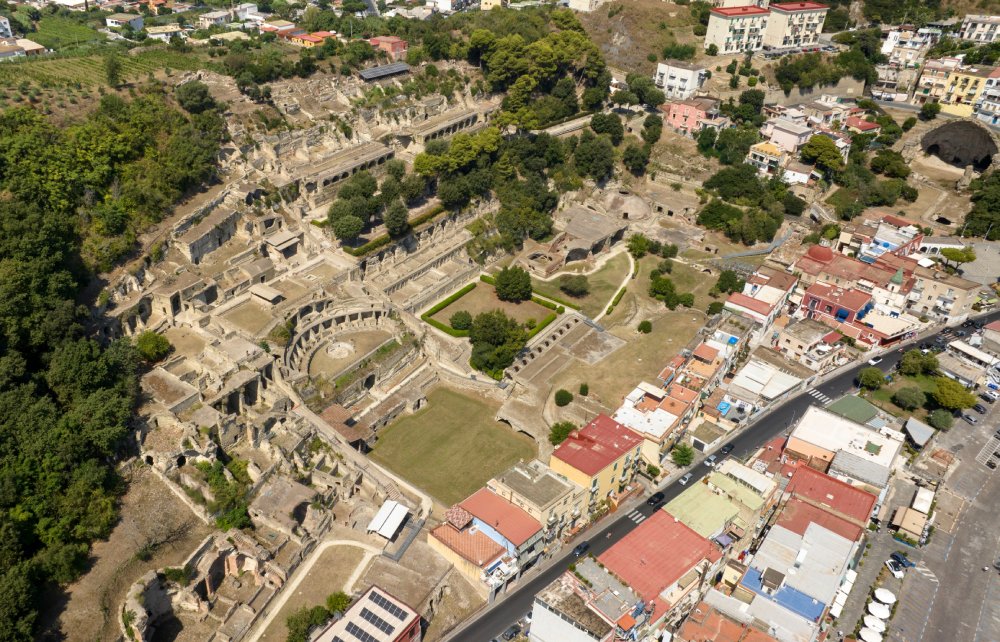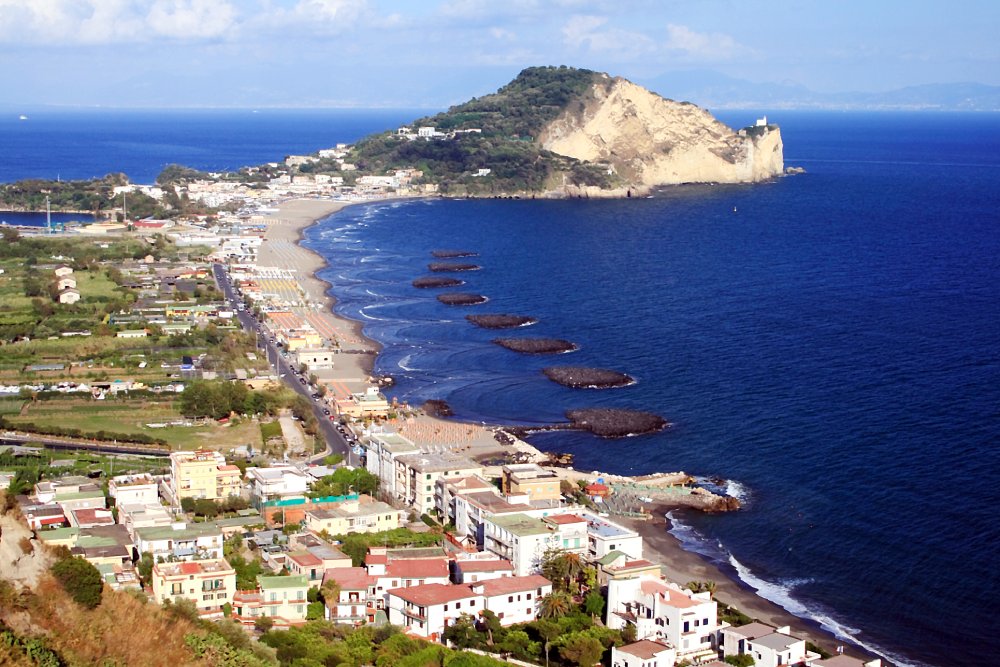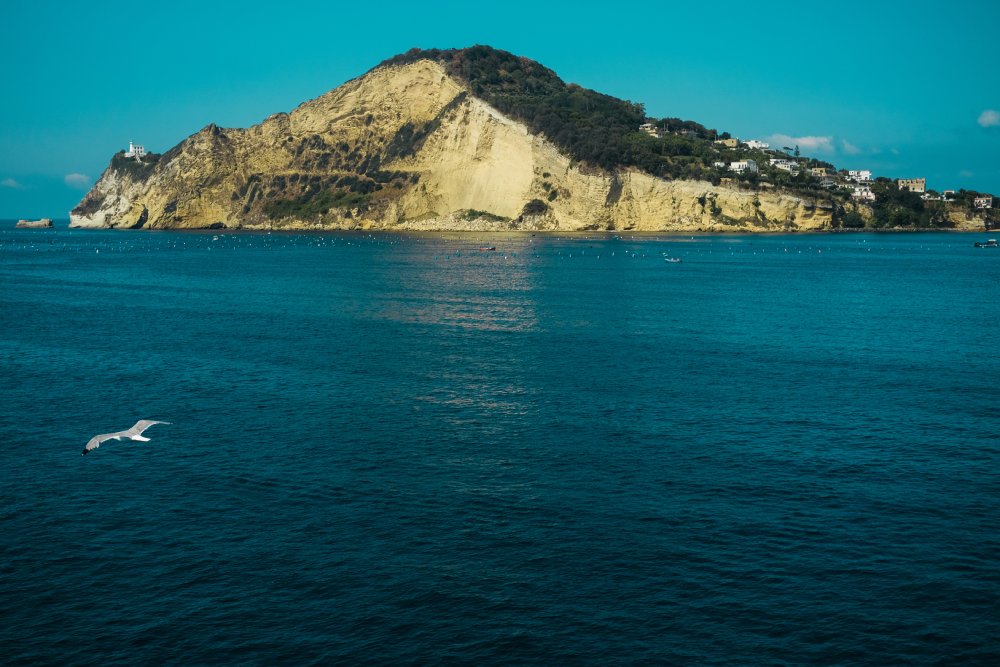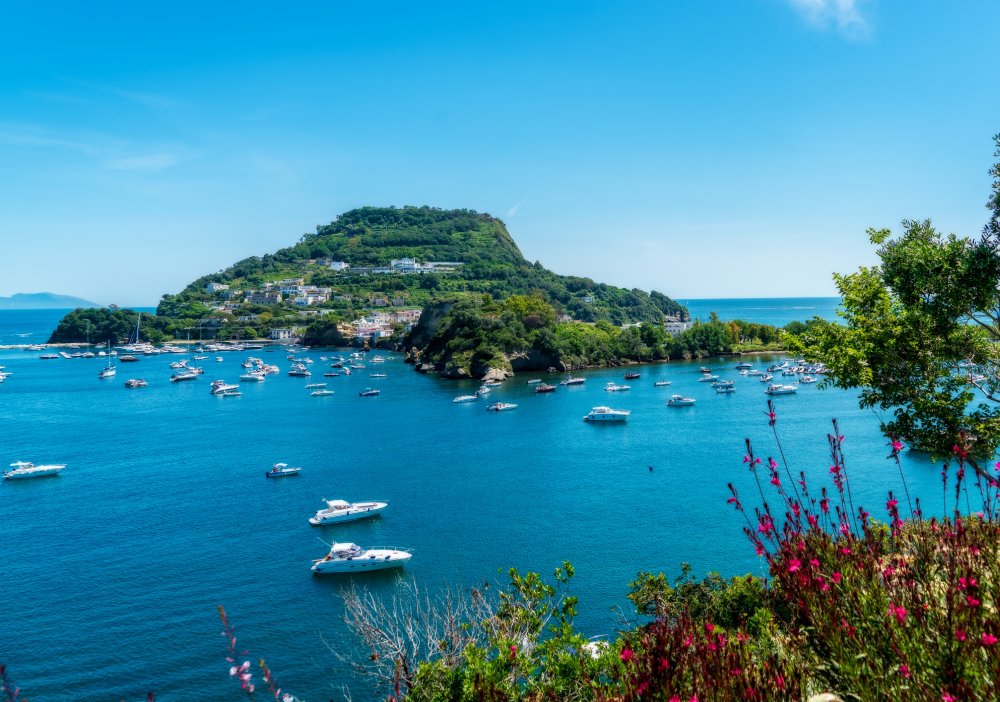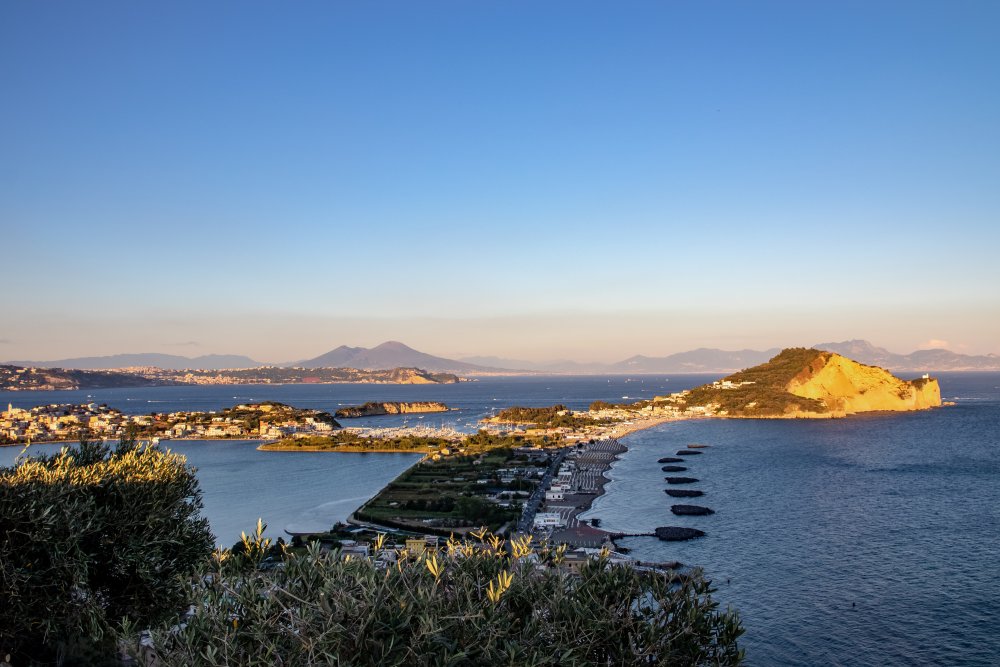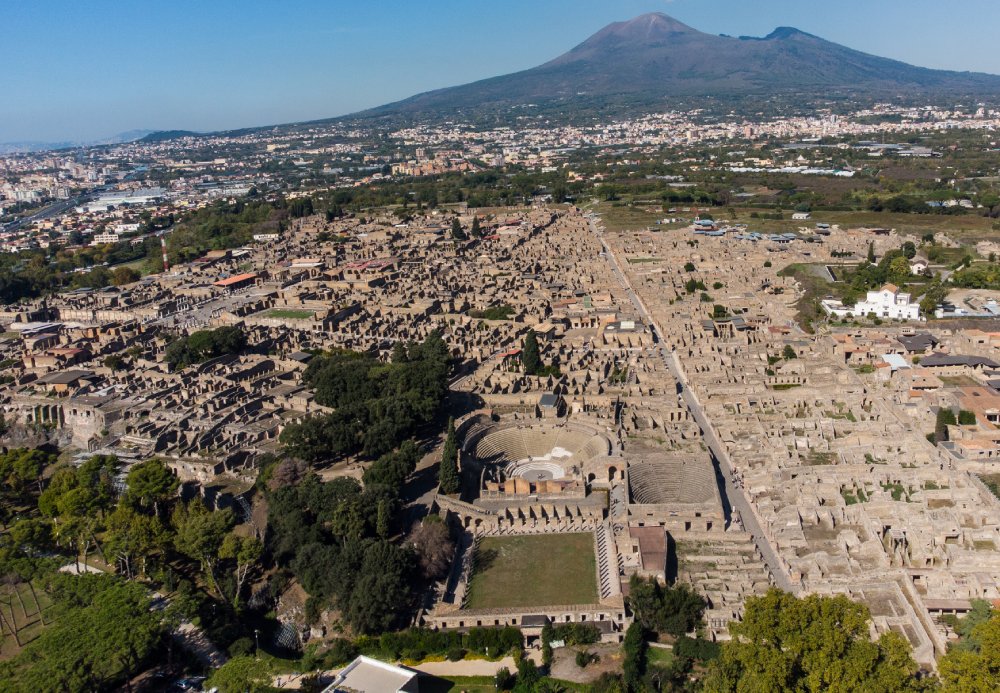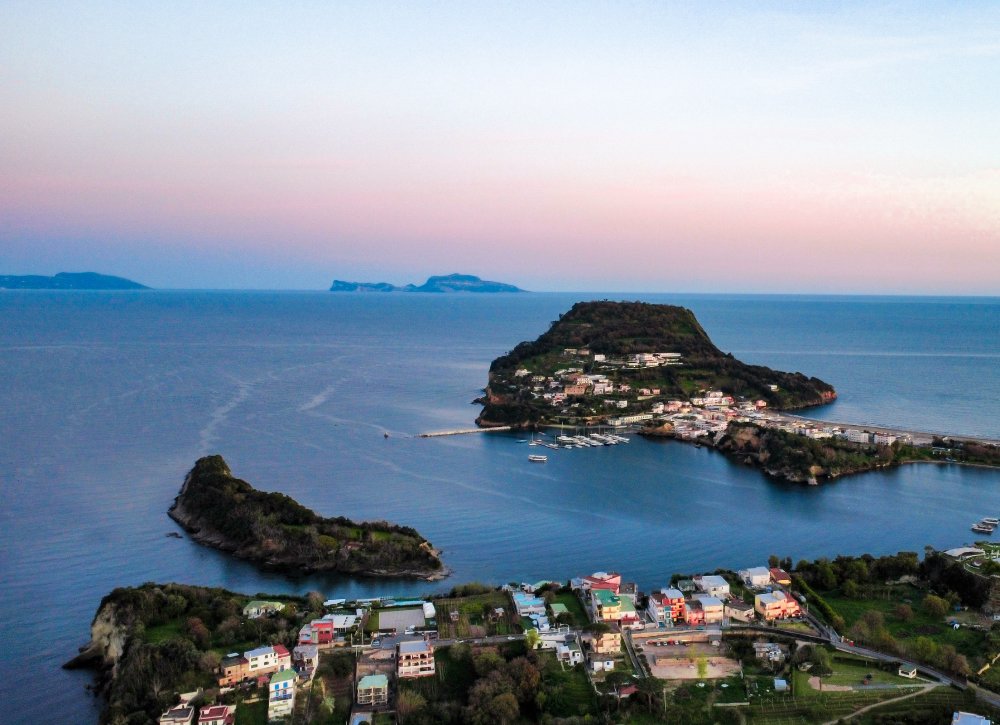A 2,000-Year-Old Discovery Puts A Kids' Playground On The Back Burner
In 2021, a three-year project was proposed in Naples, Italy to build a children's playground and recreation area with a stunning view of the islands of Ischia and Procida in the Gulf of Naples. In 2024, an archaeological survey was conducted before work began in the area (a legal requirement before any groundwork can begin anywhere in Italy). What was uncovered would stop the project in its tracks.
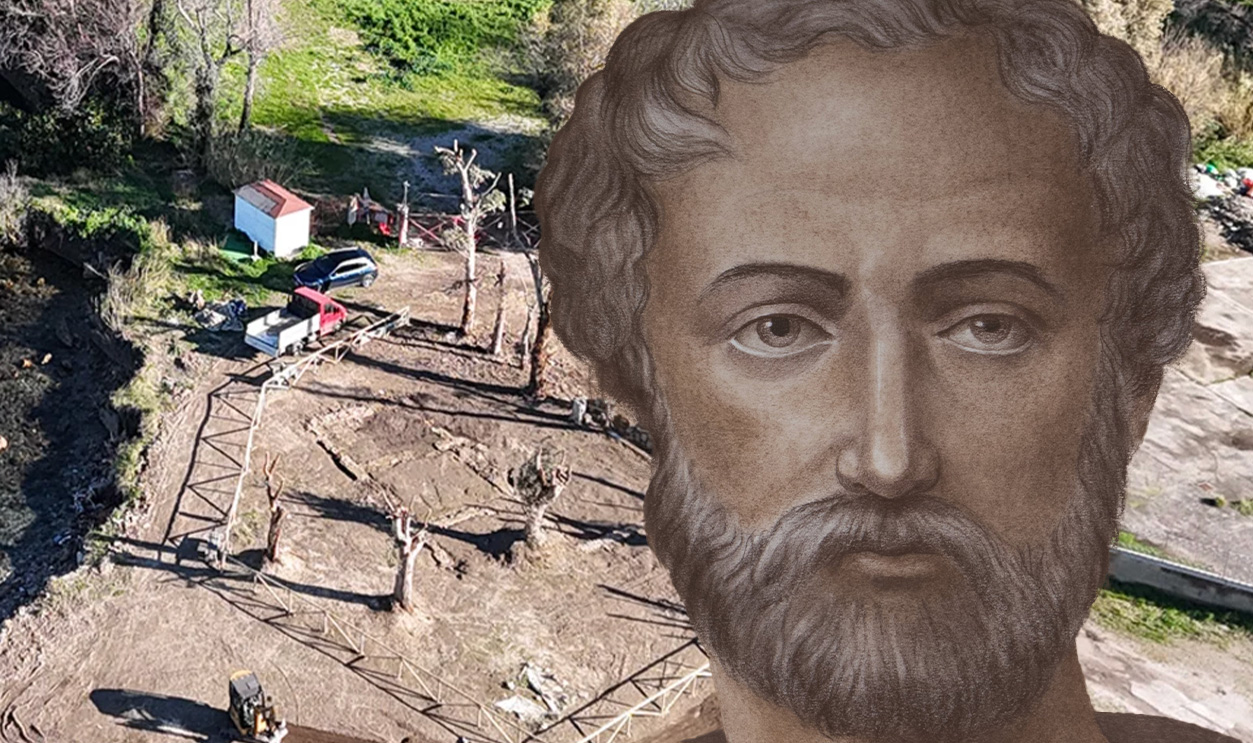
What Was Found?
Archaeologists digging at the site—high up on a cliff with a 360-degree view—found a stone foundation laid in a circular pattern and interior walls, which broke down into 10 different rooms and a large maze of exterior terraces. The archaeologists believed they'd located a mansion-like outpost.
Where Was It Found?
The discovery was made in the small town of Bacoli, an hour's car ride south of Naples. Believed to have been built during the 1st century, the town would have then been the Roman port of Misenum, now called Miseno. Misenum was home to the Roman Navy, and its first naval base, Portus Julius, was built in 36 BC.
Misenum: The Height Of Roman Naval Power In Italy
The Roman Empire didn't just control the world through land imperialism. Sea supremacy was also key to its success. And nowhere was this more prevalent during the first century than Misenum, a place where the Roman Navy ruled the Tyrrhenian Sea for 400 years, with a fleet of 70 ships.
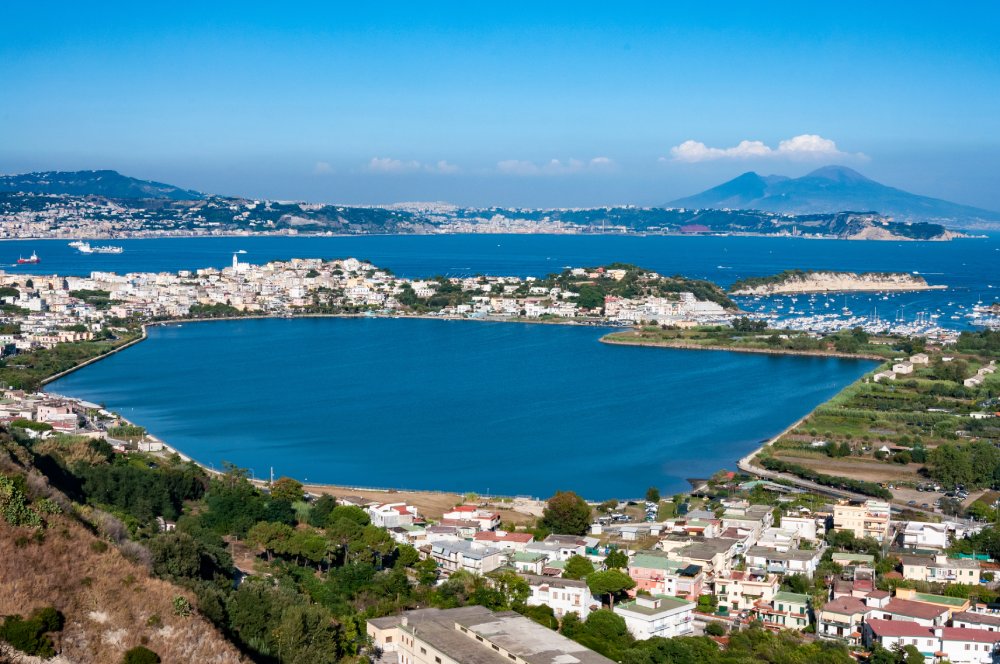 Enrico Della Pietra, Adobe Stock
Enrico Della Pietra, Adobe Stock
The Building Was Not Really A Military Installation
You could be forgiven for thinking that this was just a large watchtower—yet while this was part of its function, the building unearthed by archaeologists in 2024 seemed to be more fitting of a Roman VIP, due to the size and number of rooms and the panoply of terraces.
A Man Of Opulence And Importance
Scientists and archaeologists believe that whomever lived there was someone of great importance. They hope to keep digging at the site throughout the coming years, hoping to find frescoes that could provide better insight into who lived there. But they do have a theory.
It Could Have Belonged To Pliny The Elder
There's a strong possibility that the fortress-come-mansion could have belonged to Pliny the Elder, also known as Gaius Plinius Secundus. He was a friend of Roman Emperor Vespasian (builder of the Colosseum) and the Commander of the Roman Navy Fleet stationed at Misenum. The 360-degree view offered by the tower seems to give credence to this theory.
The Construction Surprises Archaeologists
The elaborate construction of the building took archaeologists by surprise—it was made from tufa, a type of limestone, but cut into diamond-like shapes. These were arranged in a fishing net-like pattern around 27.5 inches below ground. This would likely have given Pliny the Elder security from the earthquakes that frequently occurred in the area, something that still happens today.
"The Mouth Of Hell"
Back in Roman times, the area was dubbed "The Mouth of Hell", because of frequent earthquakes and fires that plagued the area, called the Phlegrean Fields. Below the structure, now covered over by the sea, there's a private dock that Pliny may have used to entertain guests, or to launch small boats from to inspect Roman sailors.
 Baku, CC BY-SA 4.0, Wikimedia Commons
Baku, CC BY-SA 4.0, Wikimedia Commons
A Victim Of The Earth
Unfortunately, the Earth is reclaiming the Roman structures at the Phlegrean Fields, in a process known as negative bradyseism, whereby the Earth's surface sinks deeper into the sea near areas of high volcanic activity. It's likely that this will continue and scientists and archaeologists only have a limited window to excavate as much as they can from the 2,000-year-old ruin until it is swallowed by the sea.
A Room With A Terrifying View In 79 AD
The 360-degree view from the top of what might have been Pliny's tower was spectacular. But in 79 AD, it would become a box-seat to a terrifying sight: the eruption of Mount Vesuvius and the burying of Pompeii in volcanic ash.
Fortune Favors The Brave
Pliny launched a rescue mission toward Pompeii from Misenum, likely launching a small boat from his private dock. Setting off across the bay, Pliny and his helmsman, along with a few men, encountered hot cinders falling from the sky and continued on. Pliny is quoted as saying, "Fortune favors the brave".
Pliny Perishes At Pompeii
Imagine seeing your fellow Romans in imminent danger and then voluntarily putting yourself in harm's way to help those fleeing the destruction. Pliny the Elder died at Pompeii as he attempted to help those who'd chosen to try and outrun the eruption. He was buried under 20 feet of ash as his nephew, Pliny the Younger, watched on from Misenum.
What Secrets Lie Beneath The Earth At Misenum?
While excavations are set to continue at Misenum this year, archaeologists are left wondering what other secrets they can uncover. Bacoli's mayor, Josi Ragione, is quoted as describing the ruins as "the core of this beautiful space which… our citizens and visitors will get to admire".
You May Also Like:
The Double-Discovery Made By A British Archaeologist Could Change Our View Of Egyptian History
Creepy Abandoned Towns Around The World
Researchers Discover Luxury Complex Amid Ruins Of Pompeii
Sources:


